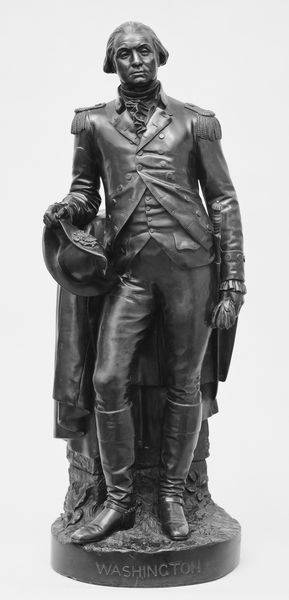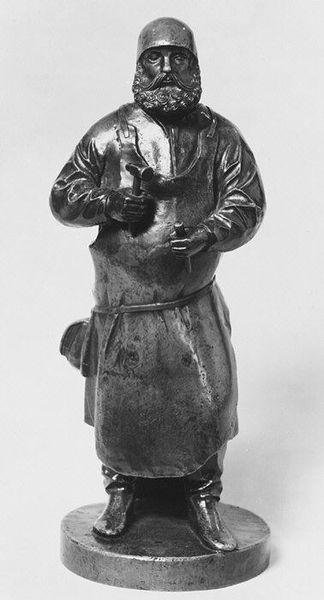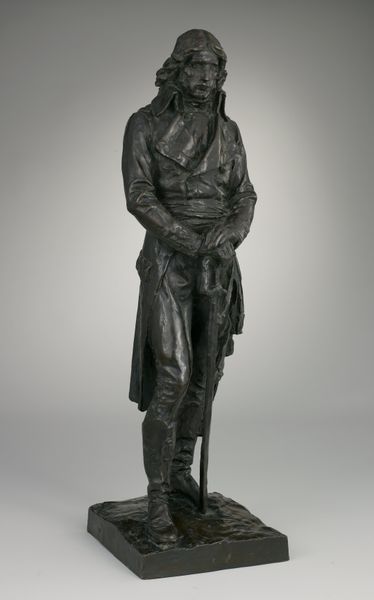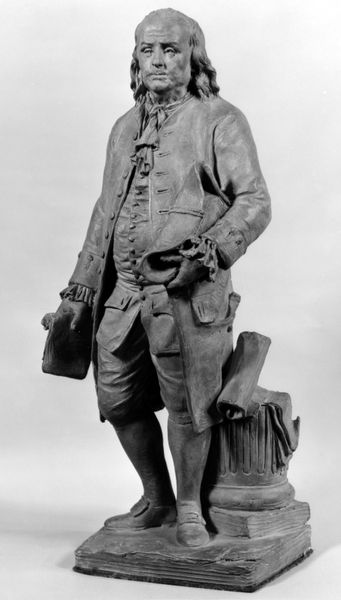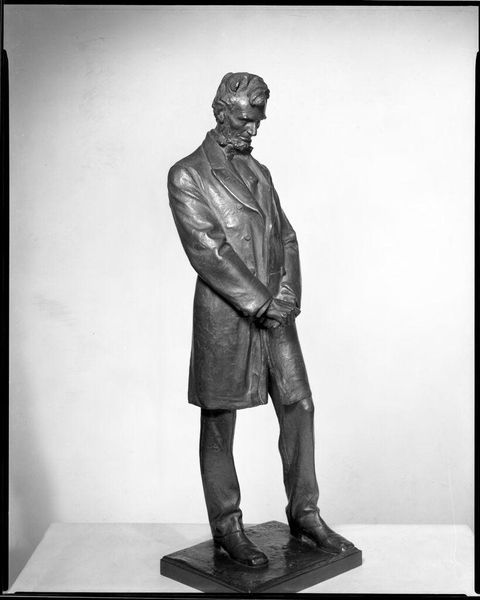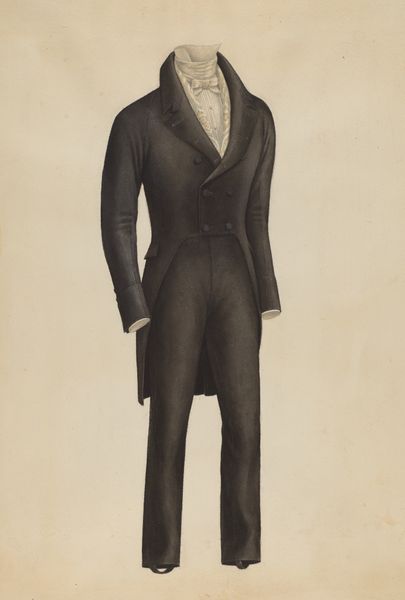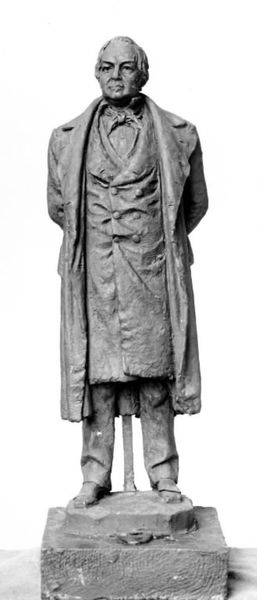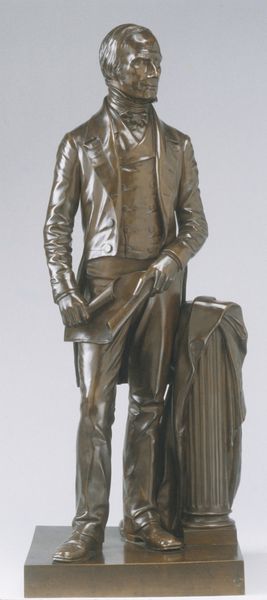
bronze, sculpture
#
portrait
#
sculpture
#
bronze
#
sculpture
#
history-painting
#
decorative-art
#
realism
Dimensions: Height: 13 1/2 in. (34.3 cm)
Copyright: Public Domain
Editor: Here we have Louis-Oscar Roty rendered in bronze between 1885 and 1899, currently housed at the Met. The detail in the folds of his jacket and the way his hand is casually tucked in his pocket make it feel so lifelike. What stands out to you in this sculpture? Curator: For me, it's all about understanding the production of this bronze and what it represents within the larger social context. Consider the late 19th century. Bronze casting wasn't a simple, solitary act. It involved foundries, skilled laborers, and an entire system of resource extraction and distribution. Who were these workers? What were their working conditions? Editor: That's a fascinating point. I hadn't considered the labor aspect of creating something that feels so individual and artistic. Does the rise of industrial bronze casting affect our interpretation of Roty as an artist? Curator: Absolutely. It challenges the traditional notion of the artist as the sole creator. Roty was, in effect, the designer. But his vision was brought to life through the hands and machines of others. Think of the hierarchies involved – Roty’s design, the foundry’s labor, and ultimately, the collector’s consumption of the object as a status symbol. The patina itself, a deliberate chemical process, speaks to this manipulation of materials for aesthetic and, by extension, social purposes. How do you see the patina, the treatment of the material impacting how this piece is read? Editor: That's a good question! It definitely adds depth and a sense of age, but maybe it also obscures the actual process of its making a bit. I never thought about the patina as manipulation. Curator: Exactly. And isn’t that what art often is? Manipulation of materials within a very specific social framework. Editor: I'll definitely look at sculpture differently now, considering not just the artist's intent, but the whole production chain. Curator: Good. Art history is as much about economics and labour as it is about aesthetics.
Comments
No comments
Be the first to comment and join the conversation on the ultimate creative platform.



